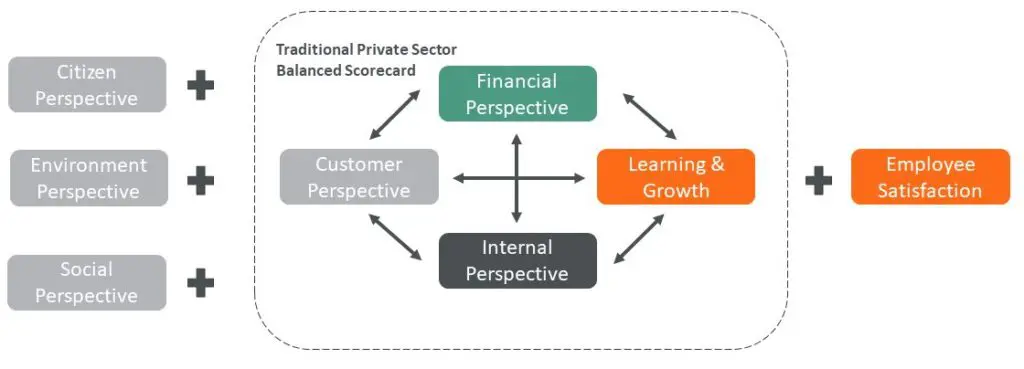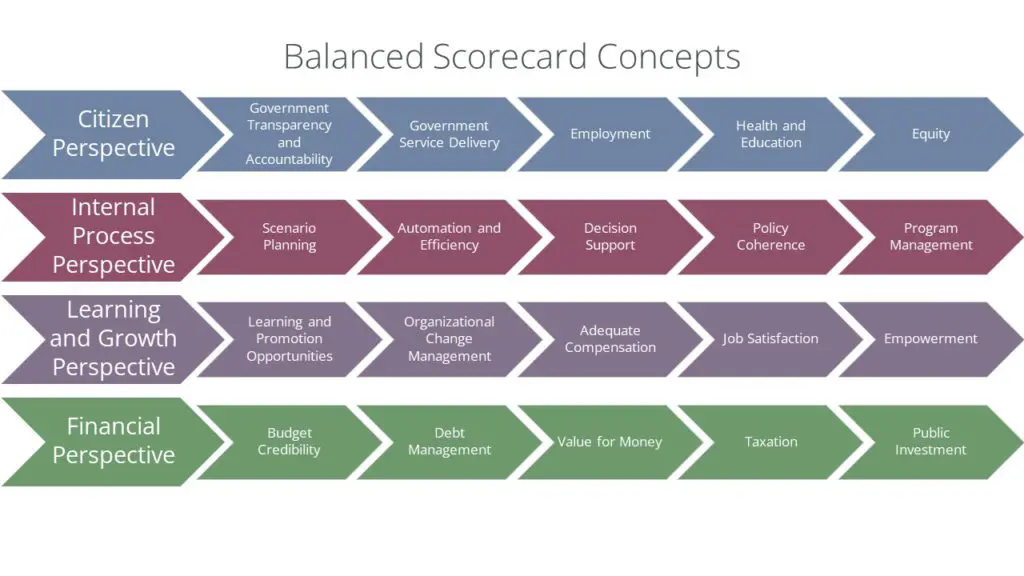Citizen wellbeing and national happiness in public policy is becoming mainstream. Evidence from multiple sources, including the World Happiness Report, concludes that public policy-oriented to growth and income is not effective in increasing reported perceptions of wellbeing. Indeed, increased income is sometimes associated with stress and reduced wellbeing.
Wellbeing and happiness are multivariate where culture plays an important role in citizen perceptions. Nonetheless, public policy can be simplified when planning is aligned to national wellbeing and when using effective performance tools. For example, the balanced scorecard performance management tool, adapted for government and wellbeing, can be an effective tool.
Members of the FreeBalance International Steering Committee (FISC) provided insight into the use of the balanced scorecard in government and together we co-created this alternative view.
Balanced Scorecard for Government


The Government Wellbeing Balanced Scorecard Template
Citizen Perspective
The emerging pattern for performance indicators associated with the citizen perspective include:
- Transparency and Accountability measures that identify transparency channels, anti-corruption results and trust in government
- Service Delivery measures that include efficiency in service delivery outputs, and effectiveness of service delivery outcomes as identified by citizens
- Employment measures that identifies unemployment, underground economy and meaningfulness of employment
- Health and Education as major sectors that play significant roles in achieving happiness and wellbeing
- Equity measures that identifies gender, age, ethnic, regional and class equity and inequity
Internal Process Perspective
The emerging pattern for performance indicators associated with the internal process include:
- Scenario planning measures to determine whether planning covers multiple years, many scenarios, and includes non-financial concepts like wellbeing for performance management
- Automation and efficiency measures that identify productivity improvements
- Decision Support measures the scope, integration, quality, and timeliness of information provided to government decision-makers
- Policy Coherence measures the integration of public policy concepts across government organizations
- Program Management measures the effectiveness of project deliverables including on-budget, on-time, and achieving performance output and outcomes
Learning and Growth Perspective
The emerging pattern for performance indicators associated with the employee learning and growth perspective include:
- Learning and promotion opportunity measures like employee training, professional certifications, talent retention and leadership advancement
- Organizational change management measures that identifies gaps between process and practice, and identifies change resistance
- Adequate compensation measures that ensures that public servant pay is in line with private sector, and that government is an attractive career for talented people
- Job satisfaction measures that ensures that the working environment enables civil service effectiveness
- Empowerment measures that show whether public servants are able to improve government effectiveness and innovate
Financial Perspective
The emerging pattern for performance indicators associated with the public finance perspective include:
- Budget credibility that identifies whether budgets are executed close to original plans, and whether financial performance is achieved
- Debt management that identifies whether debt is effectively managed in context to government objectives, cash is managed to maximize spend, and fiscal space achieved
- Value for money that identifies whether outputs and outcomes were achieved in public procurement, and whether lower prices for commodities were achieved in commodity purchasing
- Taxation that identifies compliance, improvements in revenue collected, and improvements in doing business
- Public Investments that identifies alignment of capital expenditures to objectives, and long-term infrastructure outcomes
For more information on how the FreeBalance Accountability Suite™ can assist with implementing balanced scorecards in government, please get in touch.
